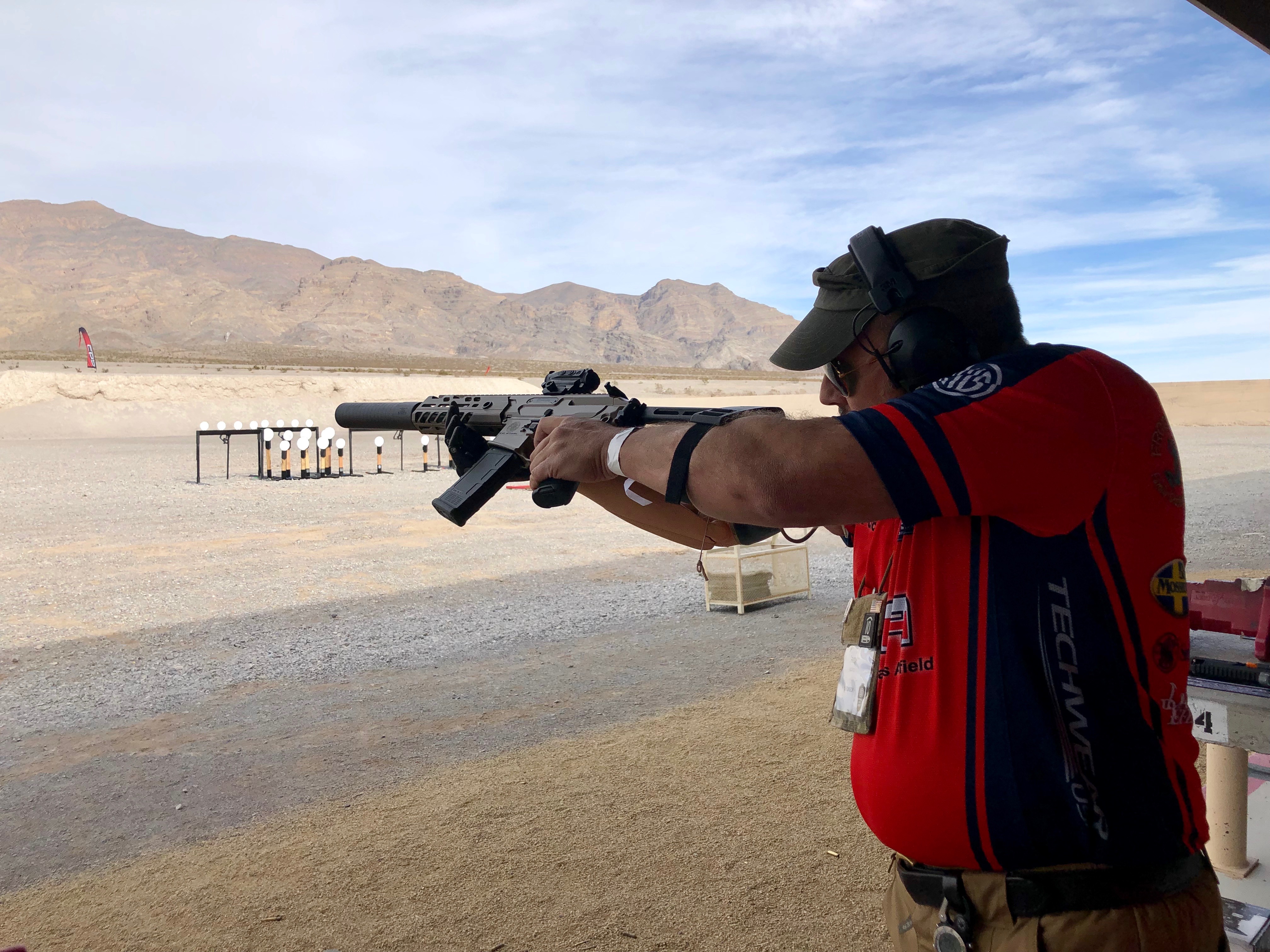Consumer Involvement




Although he may have prosthetic devices where his right leg and arm once were, retired Army Paratrooper Rick Cicero wants to be clear: at the core, he’s “made of concrete and steel, not plastic.”
Rick comes from a long line of family military Service and enlisted and served as an Army Special Operation Force Paratrooper from 1990-1994 before serving in the National Guard from 1995-1998. After he returned to civilian life, he knew that he wanted to continue to serve his community and went on to a career as a police officer in a canine (K9) unit. In 2006, during a training exercise with the K9 unit, he suffered an accident where a 90-lb. dog crashed into his right leg and seriously injured his knee, forcing his retirement from the police department. He then returned to serving the military, this time as a civilian contractor working with a K9 unit for the detection of explosive devices.
In August 2010, while on foot patrol in Afghanistan, Rick’s dog detected an improvised explosive device (IED) off the patrol route. As Rick approached the location of the device and signaled to the troops to pause in their patrol, he stepped on the pressure plate. The device detonated, and Rick knew that the device was strategically placed with himself and his K9 as the high-value targets. An ambush erupted immediately. The blast from the IED left his K9 unharmed, but caused Rick to lose his right leg above his knee, as well as significant damage to his right arm. The Air Force Special Operations Pararescue team responded, and Rick was transported via Blackhawk helicopter out of the field. He was sent to Germany, where medical personnel fought to keep him alive and manage his injuries. His badly damaged right arm developed gangrene, requiring an above-elbow amputation. Eventually he returned to the U.S., where he was treated at the Department of Veteran’s Affairs (VA) Hospital in Tampa Florida. He walked out of the hospital for the first time since his injury in December 2010 with the aid of a cane and prosthetics on his right leg and arm.
Rick has viewed every day since his release from the hospital as a new learning experience and opportunity to help advance the field of prosthetics. He enrolled in his first prosthetic clinical study within the first year after his discharge from the VA and began his own research into the field of targeted muscle reinnervation (TMR) and osseointegration (OI). TMR is a surgical procedure where residual peripheral nerves are transferred to target muscle motor nerves in order to improve nerve function, reduce pain, and enable improved and more intuitive control of prosthetic devices. OI is an alternative means of attaching a prosthetic limb to an amputee’s body whereby a metal anchor is directly implanted to the residual bone of an amputated limb. The metal implant extends out of the residual limb, and the prosthesis is then attached to the implant. Rick received TMR at Walter Reed National Military Medical Center (WRMC) in 2014 and, in 2016, became the first person to undergo OI at WRMC, first for his arm and then later for his leg. His recovery went smoothly and, following his rehabilitation protocol, he progressed faster than expected. Today, he continues to use his myoelectric arm for daily life, so much so that his use challenges the capabilities of the device, but he refuses to let his amputations prevent him from living his life to the fullest. After reaching out to leadership at the National Rifle Association, he was able to recertify as a firearms instructor, something that he was passionate about before his injuries and was an important part of his returning to normal. He went on to develop the Learn to Shoot Again program, where he serves as the lead firearms instructor, training both injured and non-injured Veterans’ marksmanship skills.
He was introduced to the Congressionally Directed Medical Research Programs by the VA and his team at WRMC and served as a consumer reviewer for the first time in 2015. He has served across various programs during that time, but enjoys working with the Reconstructive Transplantation Research Program and having an understanding of new developments that are on the horizon for the amputee community who may be considering transplantation options. Although Rick is “happy to be the bionic man” and hasn’t considered a hand transplant himself, he has witnessed some of the amazing results of those who have pursued that treatment option. Whatever treatment route an amputee chooses to pursue, Rick stressed the importance of understanding and dedicating oneself to recovery in order to get the best possible outcome.
Rick remains motivated and committed to serving his community and fellow Veterans in all aspects of his life. In his words: “It’s the least I can do for the next-generation Soldier. If there’s a blessing to come out of these injuries, it’s furthering science.”
Last updated Monday, March 10, 2025














